This paper is available for the academic year 2025-26.
While linguistics often treats language as a phenomenon in its own right, taking its evidence from what people say and what they regard as grammatical, language is clearly also a cognitive phenomenon (involving the mind and brain). And while language processing is a typically human skill and experience, technology is now sufficiently far advanced that machines can also process language in sophisticated ways (and often more rapidly). Computational tools also now allow us to better understand how language works and how it may be acquired.
Much of our knowledge about language and the mind is indirect. Although recently it has become possible, through brain-scanning techniques, to see neural responses to different linguistic stimuli, our knowledge from this kind of source is still in its infancy. However, much can be inferred about how the mind organises language from more accessible sources such as language acquisition, speech errors, language impairment, and behavioural experiments. The acquisition of language by babies and children gives a window on how we seek general patterns (children will over-generalise for a while and try forms like goed once they've realised that -ed signals the past tense); and arguably acquisition gives evidence for humans being born with an innate preparedness for language. Errors in producing language turn out not to be random: the fact that tip of the slongue is a much more likely error for slip of the tongue than tlip of the songue shows that phonotactic constraints are psychologically real (English doesn't allow tl initially in a syllable). And the loss of specific aspects of language after brain damage (e.g. strokes), such as word-finding, or sentence-formation, suggests a degree of modularity in the mind corresponding (in these cases) to the lexicon or to syntax. Modelling language on the basis of behavioural (and neural) information, and testing models through more advanced computational means thus go hand in hand. This paper will provide introductions in these related fields.
Please see details on the Moodle course for this paper (link below).
Pinker, Steven. (1994). The language instinct. London: Penguin Books.
Jurafsky, D., & Martin, J. H.(2008). Speech and Language Processing: An Introduction to Natural Language Processing, Computational Linguistics, and Speech Recognition (2nd Edition), Chapter 1 (https://home.cs.colorado.edu/~martin/SLP/Updates/1.pdf)
Clark, E. (2016). First language acquisition (3rd ed). Cambridge: Cambridge University Press.
Harley, T. A. (2017). Talking the Talk. Routledge
Learning outcomes
- An understanding of how different kinds of evidence can be used to understand the psychology of language
- Familiarity with debates over how language is represented in the mind
- An understanding of the various factors that can influence language acquisition and development
- An initial look at how computational tools can enhance our understanding of language
The paper's Moodle site can be found here.
Assessment will be by a combination of take home coursework and in person written exam
(i) In person 2 hour written exam to answer 2 data questions (interpretation of unfamiliar data sets)
(ii) Take home coursework assessment: one essay up to 1500 words to be submitted online during the exam period.
Each answer contributes a third of the total mark.
Prof. Henriette Hendriks |


